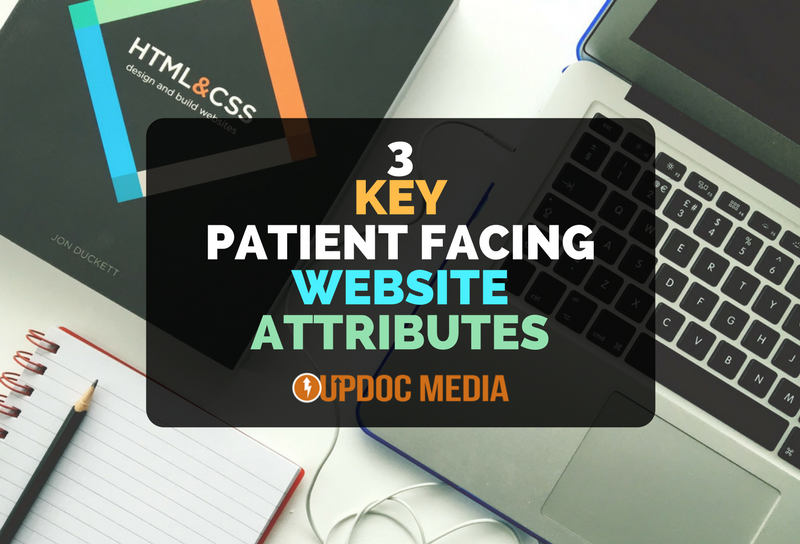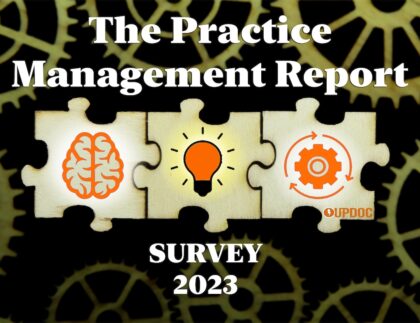
As such, there has been changing behavior with how healthcare consumers find and chose their providers. In fact, recent studies have shown that more than 80% of patients will find and choose their next provider using search & online reviews, alone. So, without further ado… here are!
3 Key Patient Facing Website Attributes
1. Less Is More
We’ve been talking about Content Clutter for some time, now. Everyone seems to have everything online; so, if everyone is special, then no one is [you can read this blog post The Future of Digital Media: Where Is It Going & What Can You Do About It, for more].
As such, make sure your website content flow gets the to the point, and FAST. Put forth what THEY, as consumers, want to know about & do it quickly. If your consumer base is very insurance driven, have all the applicable information, intake forms, etc. in quick access so they don’t have any barriers to making contact to schedule, and thus, purchase your service as product. As much as they’d care how awesome the quality of your care is, that’s expected… everyone expects to go to sushi restaurant and have high quality fish. Focus on their order winners, not their qualifiers.
Less Is More also means that your site needs to be mobile responsive, not just simply to have a mobile version. Here’s how to tell:
2. The 3 x 2 Rule
Continuing on this Less Is More theme, make sure your site has a user experience and content flow which follows the 3 x 2 Rule:
No more than 3 scrolls to click; no more than two clicks to a call to action.
People want to get to what THEY want to get to, right away with no delay! As such, curate your content in a linear scroll and browse fashion where people who are trying to get to know you, can get to such content on your site following this 3 x 2 Rule. Ensure this for all possibly permutations and combinations of content interest including but not limited to: getting to know your staff, your services, your payment/insurance policies, directions to your locations, how to contact you directly, your social channels, etc. etc. etc.
The best way to test this out is to open up your various pages along with your home page and explore the various content pathways one might take for all the various CTAs your website has; which may include newsletter & e-book opt-ins, landing on your blog roll, or finding your contact channels for scheduling. Be sure you “get lost” as well, as you’re familiarity with your own website is likely a different experience than someone discovering you for the first time.
And… BE CRITICAL! Most users don’t give websites much more than a couple seconds to load up and a 7-12 more seconds to find what they are looking for before they move on.
3. Make Your Patients Your Heroes
While this may sound repetitive as a theme, I can’t stress enough how EVERY ELEMENT of your website needs to portray the patient (or, customer) as the hero and very purpose in why your website exists.
Yes, you will need content in terms of talent acquisition and other business avenues of concern. Nevertheless, these areas aren’t areas most clinics struggle with on the website front. MOST clinic websites look as if they were built to impress other clinics… not the patients they are trying to attract.
Content is King. Make it about THEM.
There should be plenty of content that would draw a prospective customer to a purchasing behavior. This could be anything from testimonials to FAQs to specific problem-solution service line descriptions. All together, the content on your site should have an emotional pull that causes someone to buy.
People purchase emotionally. They justify rationally.
If your website content is all about the objective and measurable reasons on why you are a better choice as a provider, that’s not going to sell. HOWEVER, if your content features patients having an excellent care experience, now you have something that is interesting to the consumer’s mind!
We’re excited to continue with the 5-4-3-2-1 summer blog series. Just in case you missed the previous 2, you can find them linked below:
- 5 Essentials of Email Marketing
- 4 Marketing Metrics You NEED To Measure
- Annnnnd, coming up will be:
- Two Critical Financial Gauges For Better Revenue
- This ONE Analysis Leads To Better Profits









